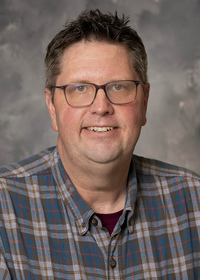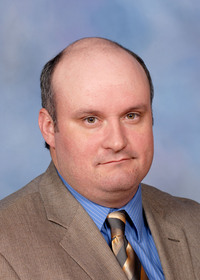Natural Capital Exchange's Former Forest Carbon Credit Programs in Mississippi
Preface
Operating as a voluntary market where neither the buyers nor the sellers had to participate, Natural Capital Exchange (NCX), was a different type of forest carbon program. The program directly catered to smaller scale private forest landowners such as family forest landowners (FFL) by allowing them to sell carbon offsets based on 1-year harvest deferrals, or harvest deferral credits (HDC), and with no fees to participate. Beyond that, NCX was highly advantageous to FFLs because of annual contract commitments and because minimum acreages to participate in the market were around 5 to 20 acres depending on forest type and site productivity levels—a landowner needed at least 5 HDCs to participate. These required minimum acreages were low compared to many other programs. Thus, NCX was attractive and applied to many FFLs in the southeastern United States.
Unfortunately, like the defunct Chicago Climate Exchange (CCX), NCX was not able to continue its 1-year HDC carbon project. Essentially, throughout the entire HDC program when landowners could enroll (Spring 2021 to Fall 2022), there was talk about whether the 1-year HDC project, based on the tonne-year accounting concept, was truly additional and whether it would be registered and verified as such.
Nonprofit organization Verra was essentially tasked with determining the validity of NCX’s 1-year HDC project. In carbon credit terminology, Verra is a registry. The role of registries is to provide a set of standards for carbon projects, including carbon measurement and methodology and the review and regulation of the project to ensure it is certified. Unfortunately, on June 22, 2022, Verra stated:
Verra will not move forward with incorporating tonne-year accounting into the VCS [Verified Carbon Standard] Program at this time. Verra reserves the right to revisit this decision in the future, after another consultation on this subject that considers feedback received during the most recent consultation (February–April 2022).
As a result, in November 2022, NCX announced that they had reduced their workforce by 40 percent and that they were not offering any 1-year HDC program cycles in the near future.
This publication focuses solely on NCX as it was previously a very viable voluntary carbon program available to small Mississippi landowners. Additional information on subsequent programs will be shared as they become available.
The future of NCX and their particular tonne-year accounting methodology is not entirely closed for discussion, but for the foreseeable future, this 1-year HDC carbon program will no longer be offered. Nonetheless, due to the popularity of the carbon program, this Extension publication, originally written near the beginning of NCX and its HDC program’s popularity, provides a reference to those interested in the protocols of this program.
Seeking to Mitigate Forest Carbon Emissions
Forests are useful in mitigating global temperature increases because they sequester carbon dioxide from the atmosphere and transform it into biomass through the photosynthetic process. This sequestration counteracts the warming effects of carbon dioxide in the atmosphere that, through the “greenhouse effect,” can negatively impact living creatures in water and on land.
This is a public benefit provided by private forest landowners, but, in the U.S., there are no federal incentives (payment programs) to encourage forest carbon sequestration by forest landowners. However, there are several state and regional programs designed to mitigate carbon emissions, such as the Western Climate Initiative (WCI) and Regional Greenhouse Gas Initiative (RGGI). Qualifying for enrollment as of 2021 is difficult, so opportunities for forest owners to engage in these programs is limited. Eligibility requires a relatively large timberland base where qualifying management actions (afforestation, conservation, and limiting harvesting operations over specified periods and forests) are actively practiced.
Besides regulated markets, there are also voluntary carbon markets that seek to offset emissions. In a voluntary market, consumers (individuals, companies, or governments) who are not required to offset their carbon emissions buy carbon offsets to counteract carbon dioxide released by their activities. Programs like Finite Carbon, Blue Source, and Working Woodlands (The Nature Conservancy) focus on landowners who own more than 2,000 acres. However, there are other programs that focus on smaller forests. These include but are not limited to Finite Carbon’s Core Carbon Program, Cold Hollow Carbon Project, Green Trees Carbon Program (afforestation only), and Forest Carbon Works.
Every program has unique features, and, depending on your objectives, another program may be more appropriate. Before signing up for any carbon program, be sure you evaluate the program to ensure that it lines up with your management goals and land ethic. It is also recommended that you consult with forestry and legal professionals to discuss the far-reaching forest-management implications of these programs.
While the previously mentioned programs require longer time commitments from forest landowners (generally 20 years or more), NCX offered essentially a 1-year rental that could be renewed for successive years. This was attractive to some forest owners due to the limited time required to fulfill a contract.
NCX Enrollment
NCX had a straightforward process for enrollment. You or a consultant working on your behalf could sign up at https://landowners.ncx.com/sign-up. Then, you could use NCX’s mapping system to submit information about your property. This included shape files that illustrate the applicant’s property on the map. Hand-drawn or hard-copy maps were also accepted, but this caused delays in the application process.
How Did It Work?
NCX remotely assessed the tract’s “harvest risk”—the possibility of harvest. If the property’s timber was not a likely candidate for harvesting, it did not qualify. Consider a 4-year-old pine stand. Since there was no danger of harvesting non-merchantable timber, this property would have been deemed ineligible. The more volume in a stand and the higher the “risk of harvest,” the more eligible carbon you had on the stand.
NCX conducted these calculations remotely through satellite imaging and growth and yield modeling to determine what was physically on the ground. NCX then returned an eligibility report that showed how many HDCs were on the property. These HDCs were not on a per-ton or per-acre basis. Prior to 2022, 1 HDC equaled roughly 25 green tons, but an NCX document for the 2022 winter cycle indicated that generating a verified carbon credit required a larger volume of harvest deferrals. Thus, all things equal, your property would likely have fewer HDCs because of this change in the green tons to HDC ratio.
Then, the landowner would determine how much harvest they were willing to defer to hold that eligible carbon (all or a portion of the total amount) for 1 year. The holding year would begin at a designated quarterly start period, and the contract would expire after 365 days of enrollment. The landowner would determine their sale prices; some of the carbon units would be sold for one price and other units for a different price, or all the credits could be sold for a single price.
Keep in mind, though, other landowners were selling, as well. NCX used a blind auction process. All bids—from both buyers and sellers—determined the market price for that quarter’s auction. This was then applied to all participants who bid at or below the market price. If you bid above the market price for all your credits, you would not be eligible to participate for that quarter, but you could bid in the following quarter.
This style of market often depressed prices compared to alternative styles. Prices fluctuated from quarter to quarter and generally ranged from $8 to $12 per credit, but that was not a guarantee of what prices could do in the future.
After the Contract Ends
Could you participate in other programs after your contract with NCX ended?
While there was no option to enroll simultaneously, there had been confusion about subsequent participation in other programs. The short answer was to assume that you could not. Particularly with NCX, the tonne-year methodology involved discounting carbon held in the future with carbon deferral credits assigned when you enrolled in the program. So you would be paid for the carbon the timber stand would sequester over the longer term despite the 1-year agreement. If you were to enroll in another program after your NCX contract ended, this would qualify as double-counting the carbon you were sequestering in separate programs (assuming you enrolled all your possible deferral units).
How long would you have to wait to enroll in another carbon offset program after your NCX contract ended?
The answer is currently unknown. If you were interested in pursuing longer-term programs subsequent to your contract expiration with NCX, you would need to discuss the rules with an NCX representative. Alternatively, according to NCX representatives, enrolling in NCX after being in one of the other programs was not subject to any limitations.
References
Galik, C.S., Murray, B.C., & Mercer, D.E. (2013). Where is the carbon? Carbon sequestration potential from private forestland in the southern United States. Journal of Forestry 111(1), 17–25.
Malmsheimer, R.W., Heffernan, P., Brink, S., Crandall, D., Deneke, F., Galik, C., Gee, E., Helms, J.A., McClure, N., Mortimer, M., Ruddell, S., Smith, M., & Stewart, J. (2008). Forest management solutions for mitigating climate change in the United States. Journal of Forestry 106(3), 115–171.
Tanger, S.M., da Silva, B., & McDill, M. (2021). Cut or wait decision-making for landowners. Mississippi State University Extension Publication 3593.
The information given here is for educational purposes only. References to commercial products, trade names, or suppliers are made with the understanding that no endorsement is implied and that no discrimination against other products or suppliers is intended.
Publication 3738 (POD-05-24)
Revised by Curtis VanderSchaaf, PhD, Assistant Professor, Central Mississippi Research and Extension Center, from an earlier edition by Shaun Tanger, PhD, former Assistant Professor, Coastal Research and Extension Center, and Calvin Norman, Forestry and Wildlife Extension Educator, Penn State Extension.
The Mississippi State University Extension Service is working to ensure all web content is accessible to all users. If you need assistance accessing any of our content, please email the webteam or call 662-325-2262.




